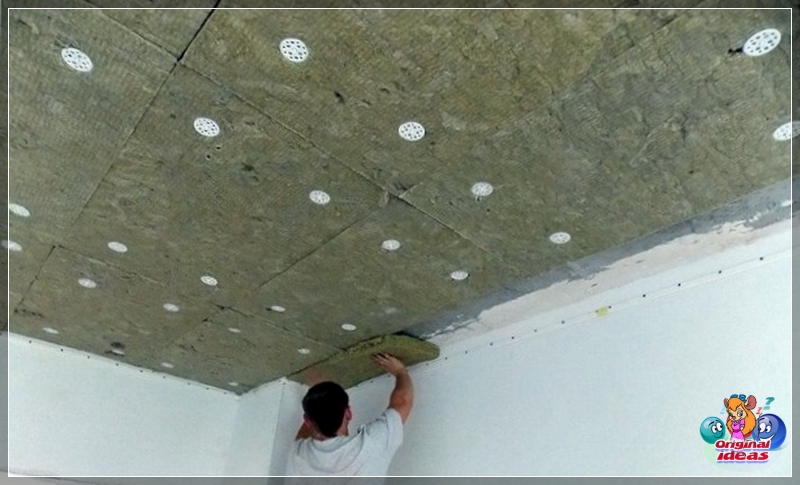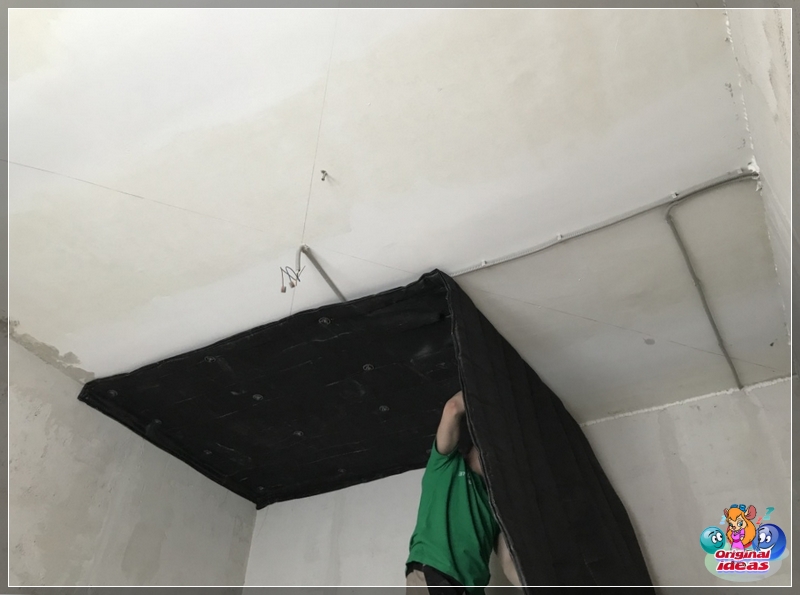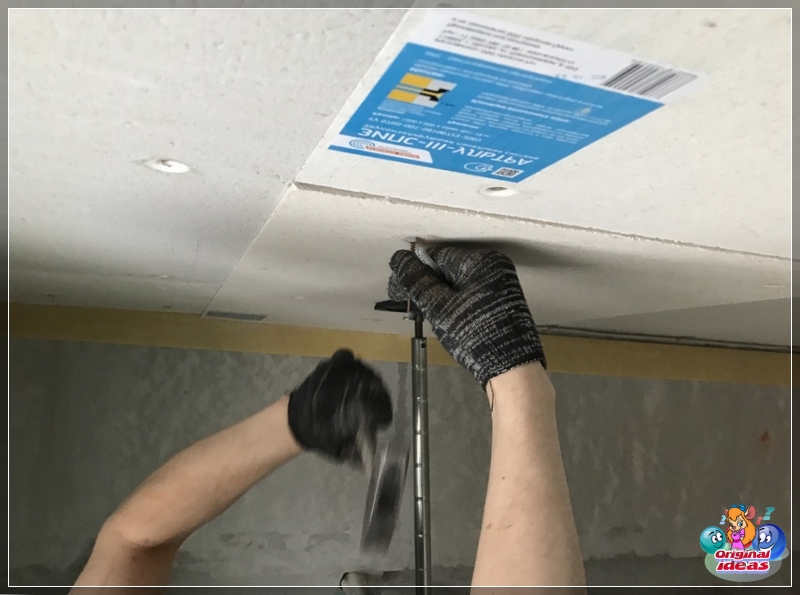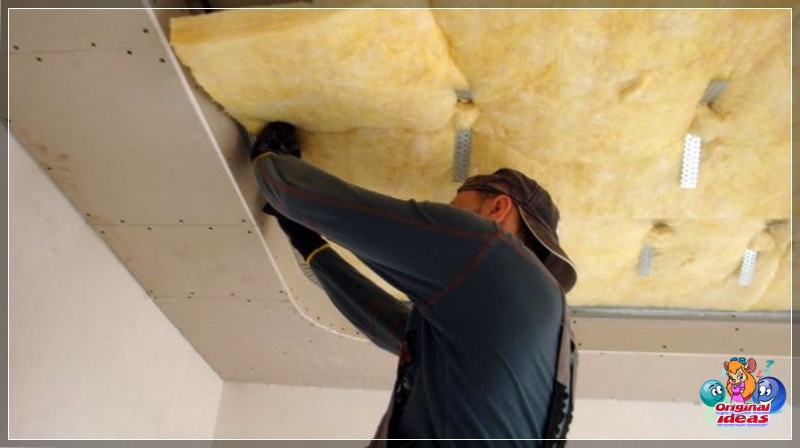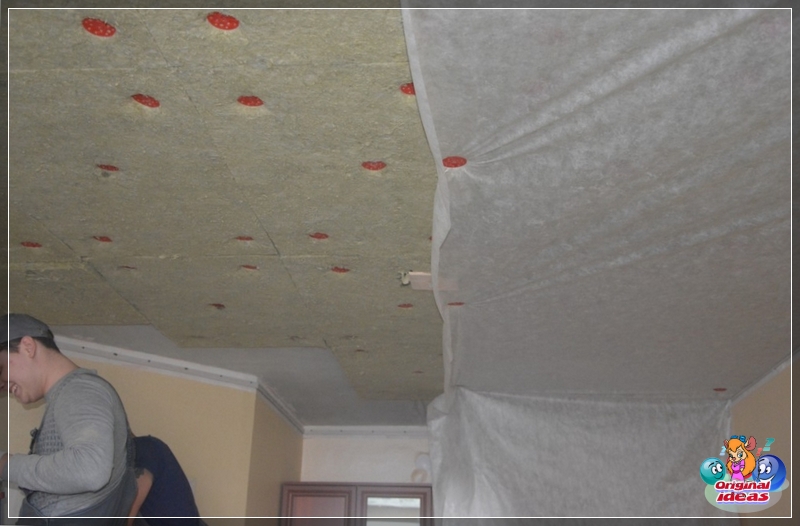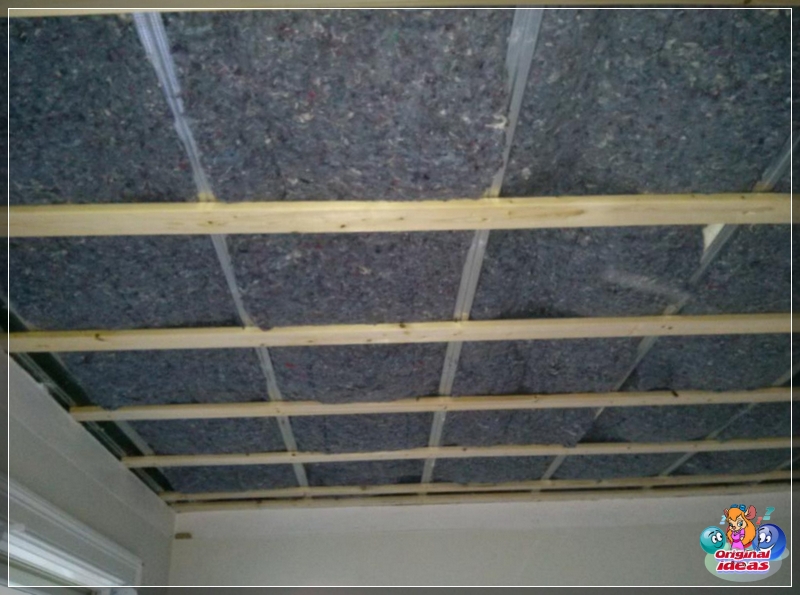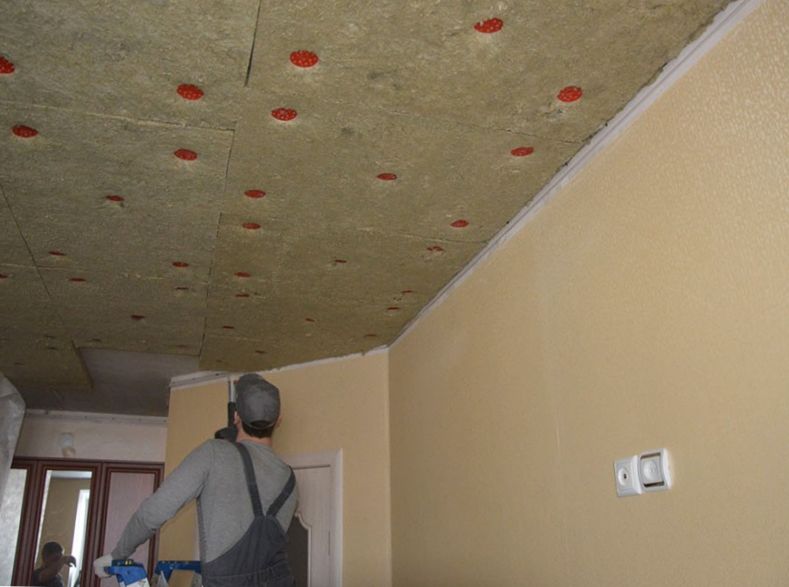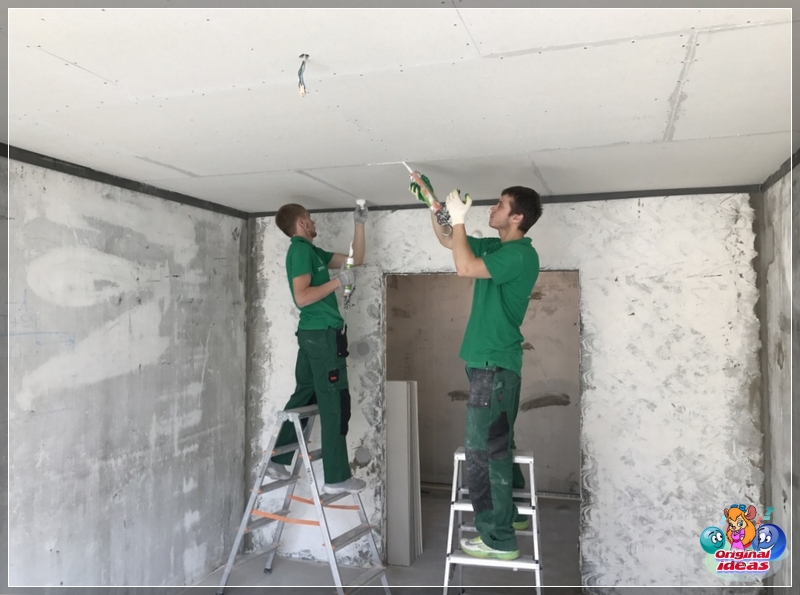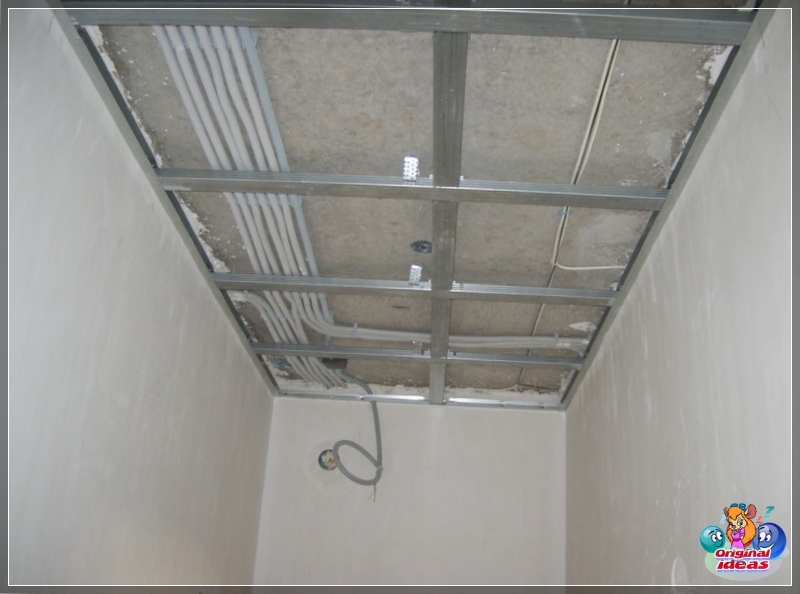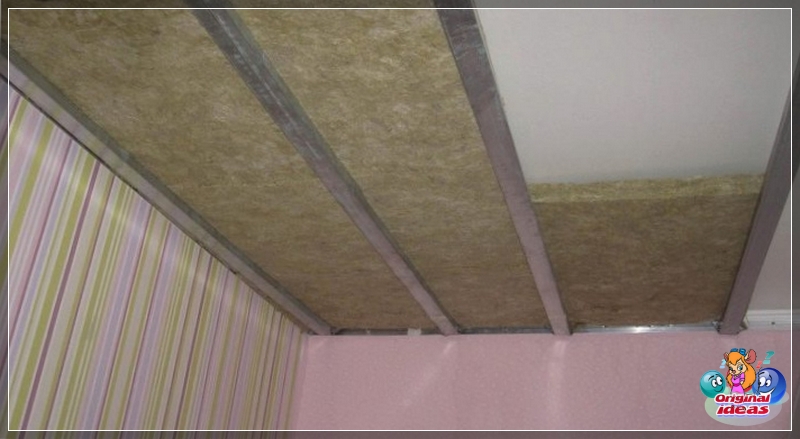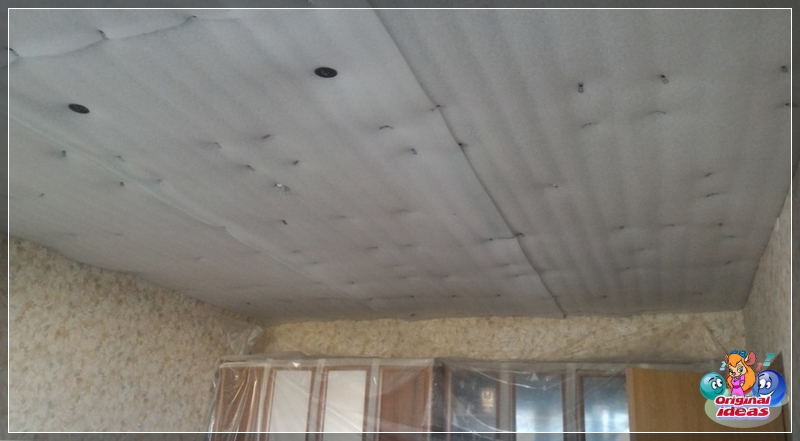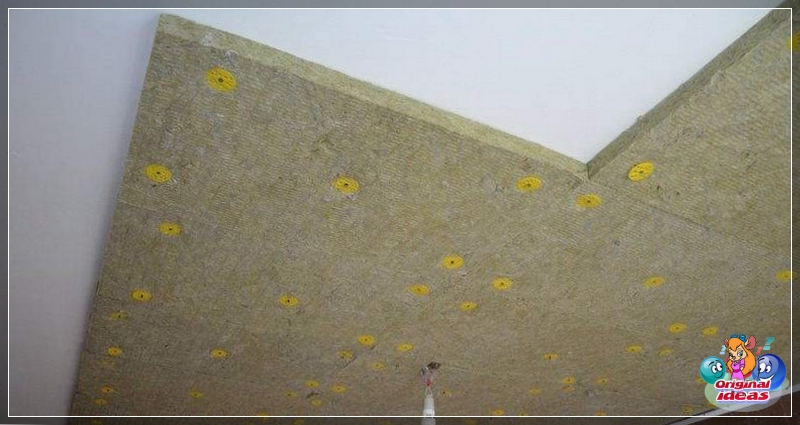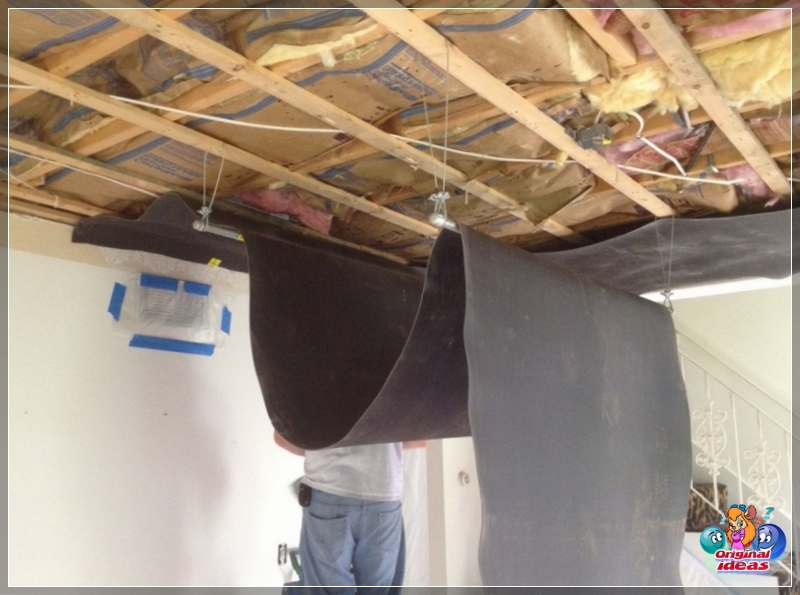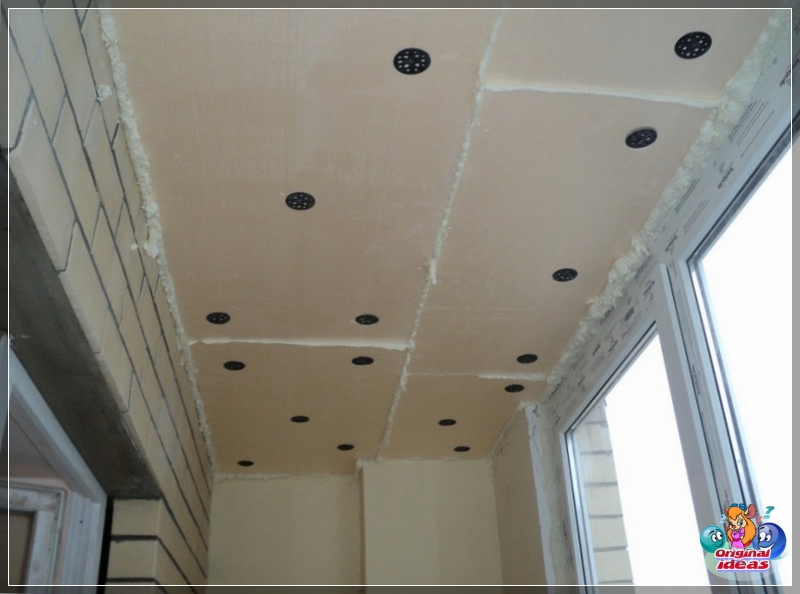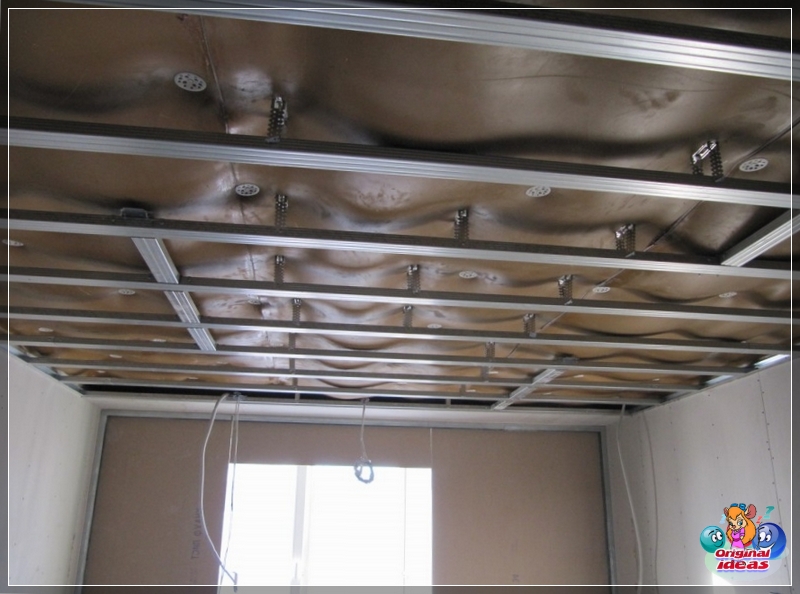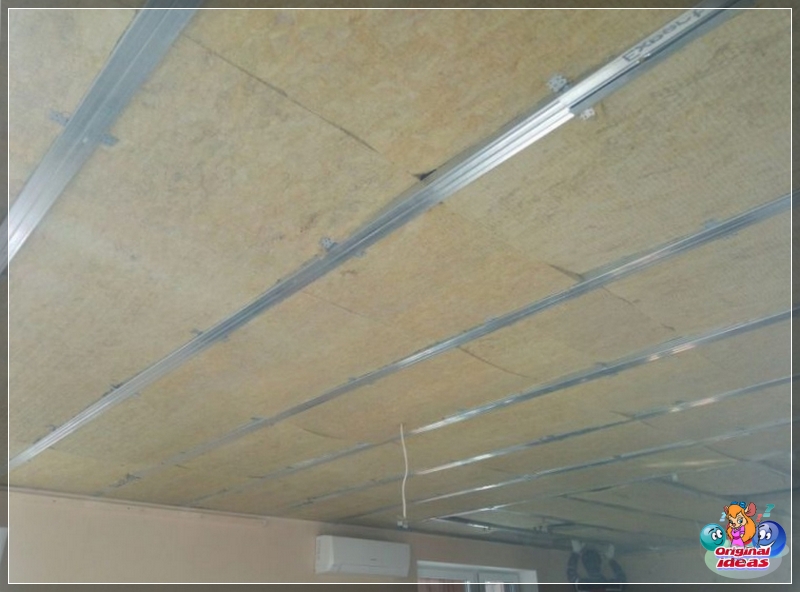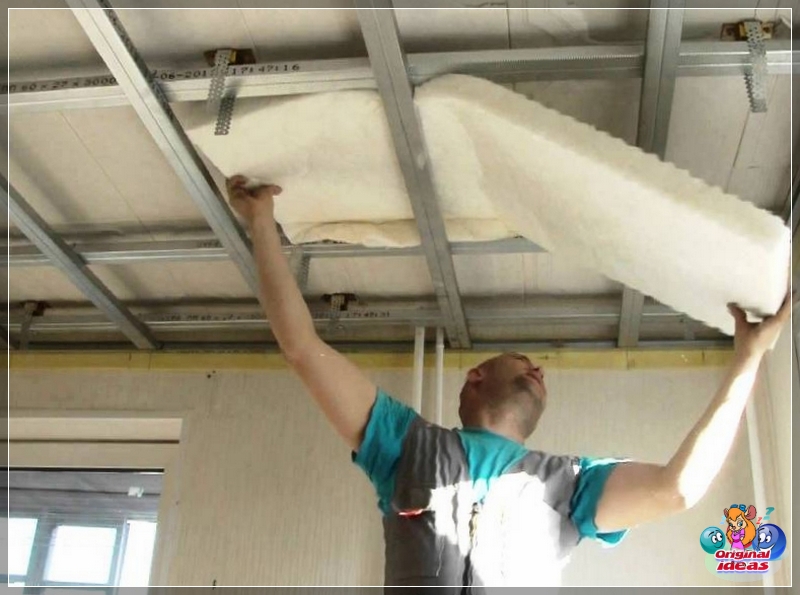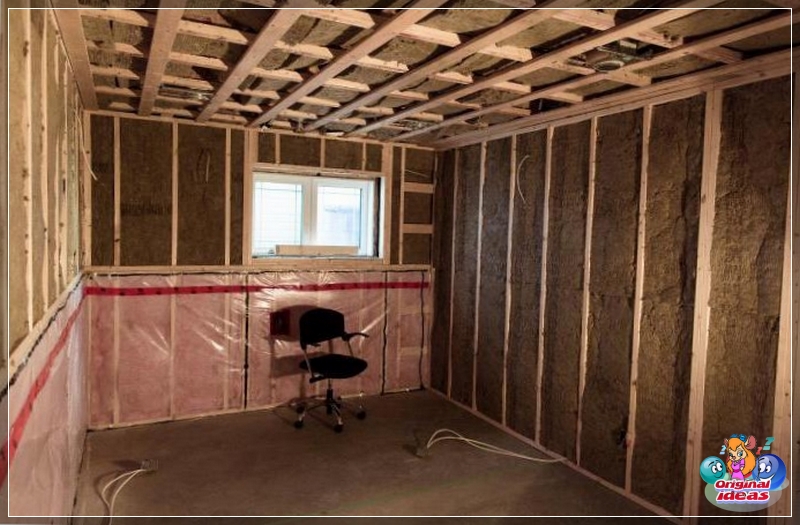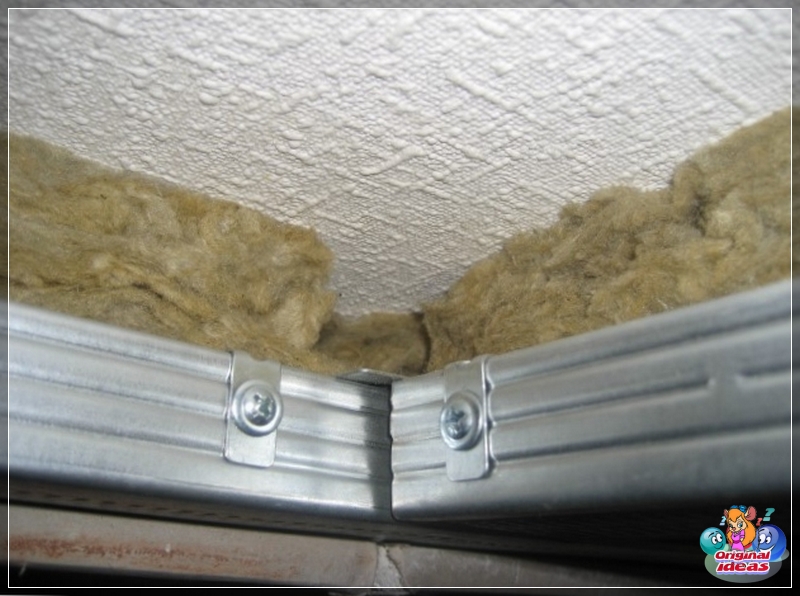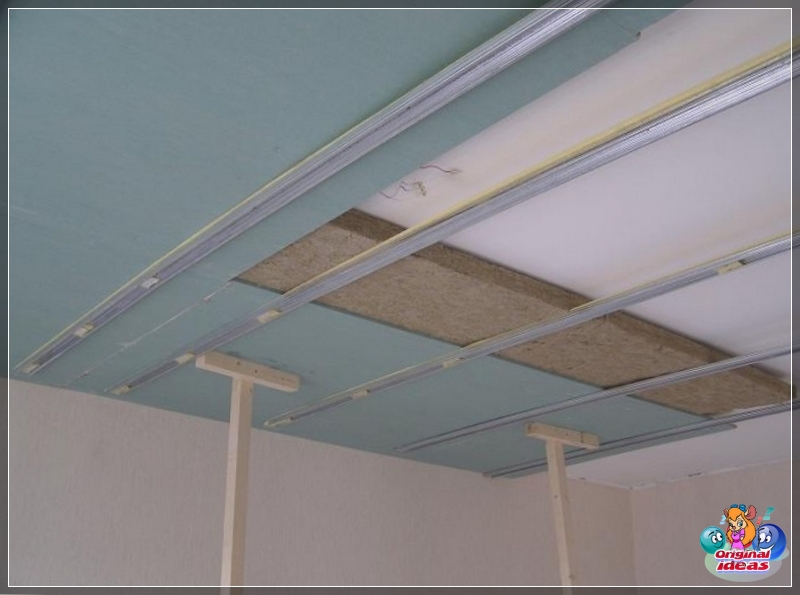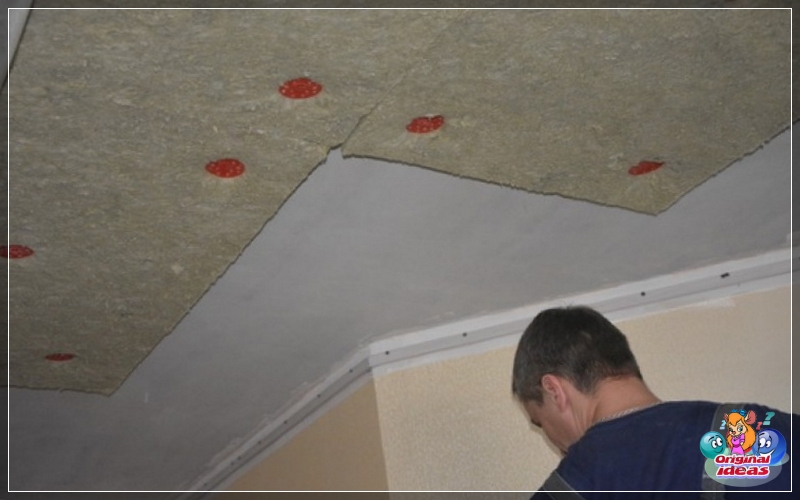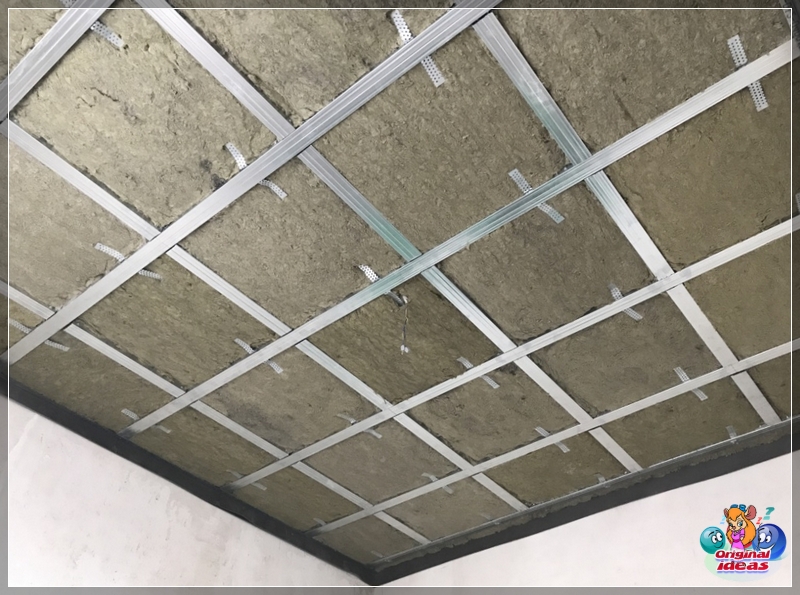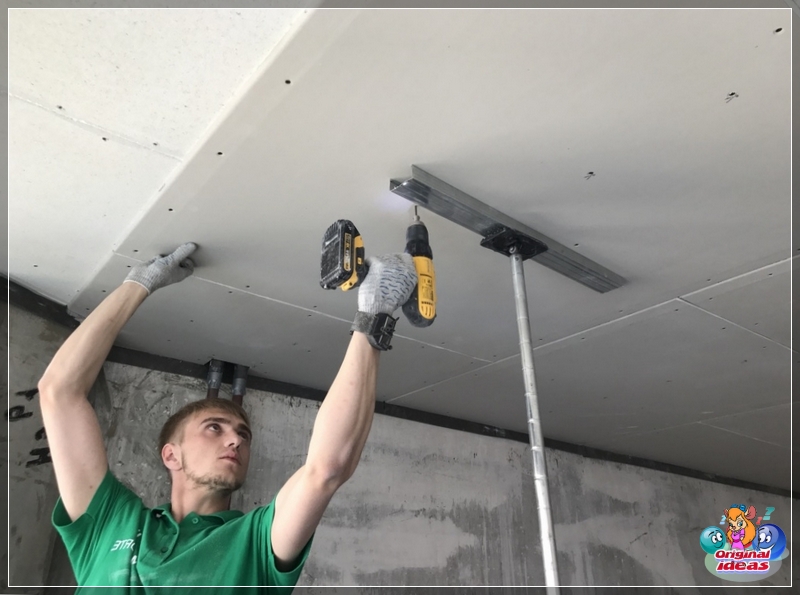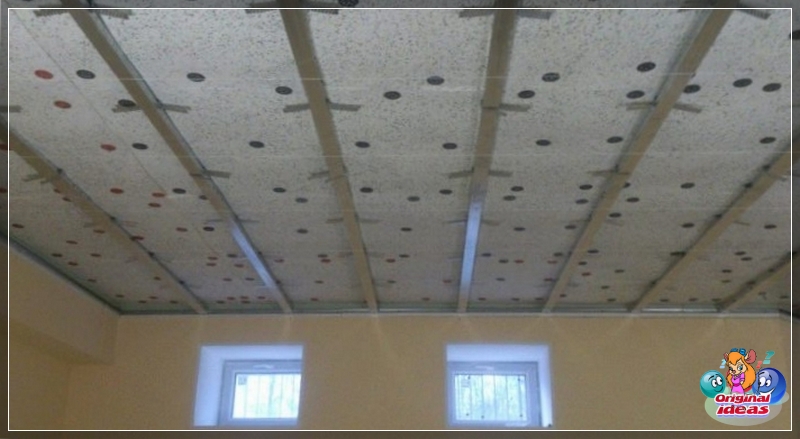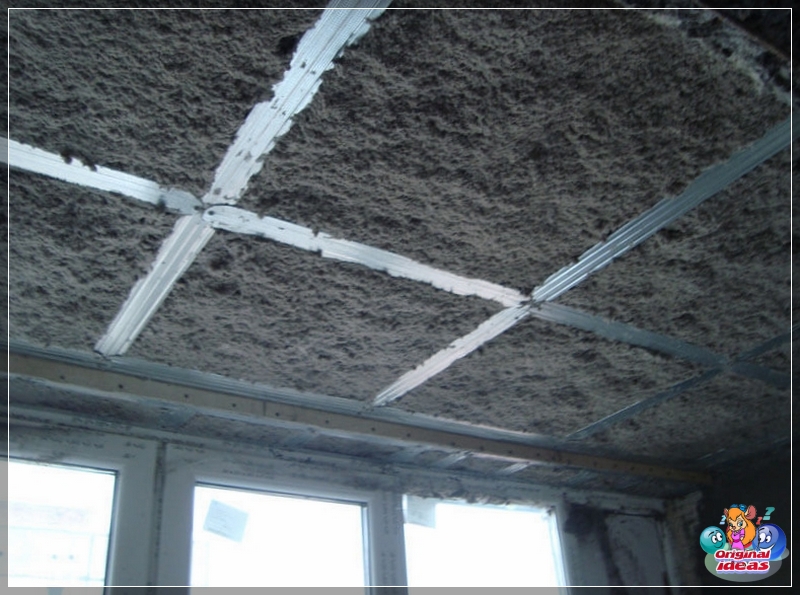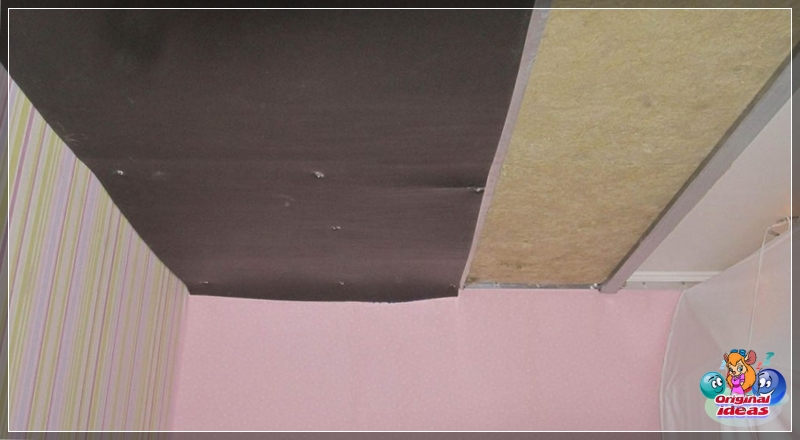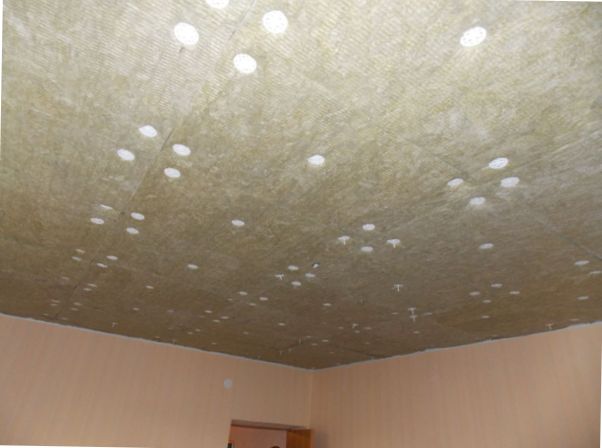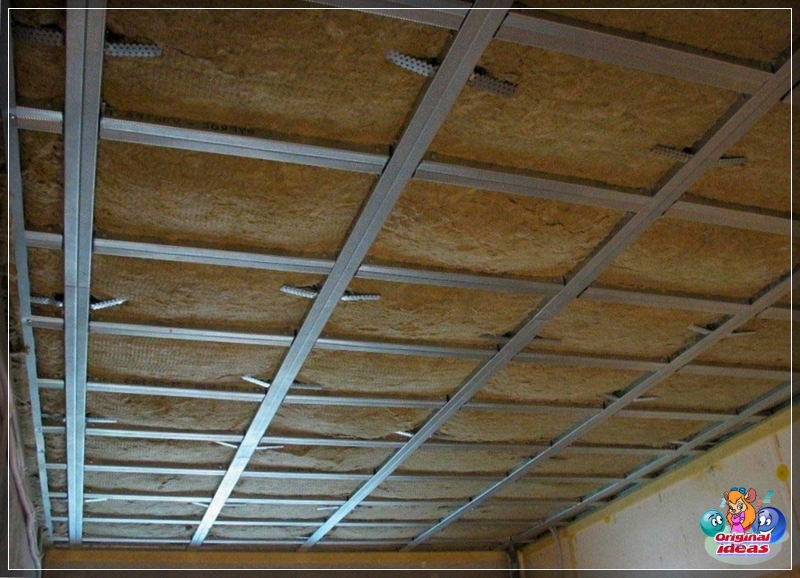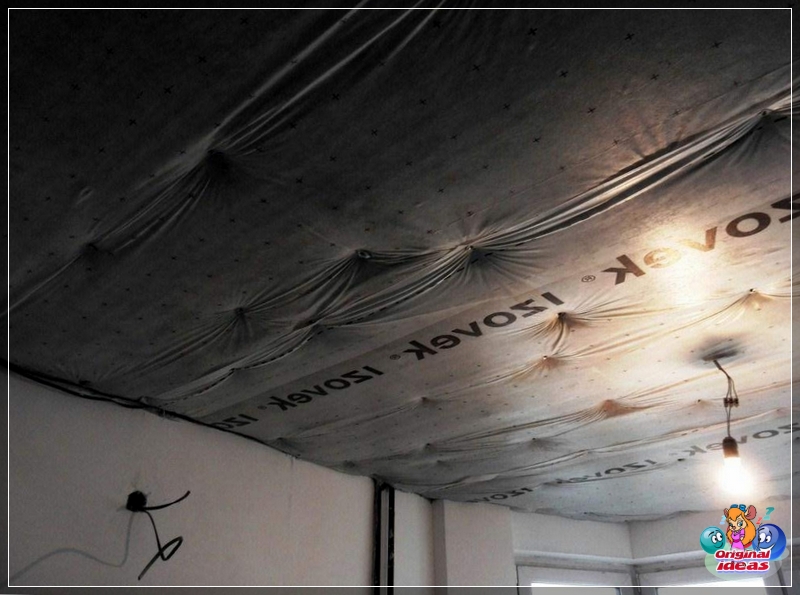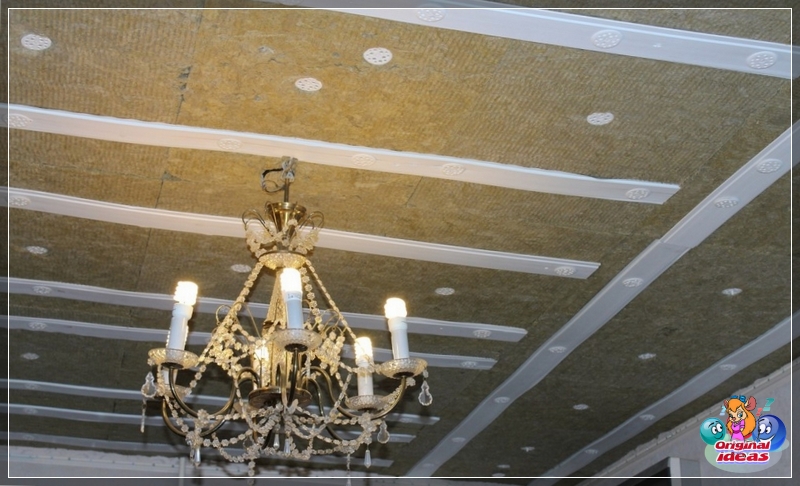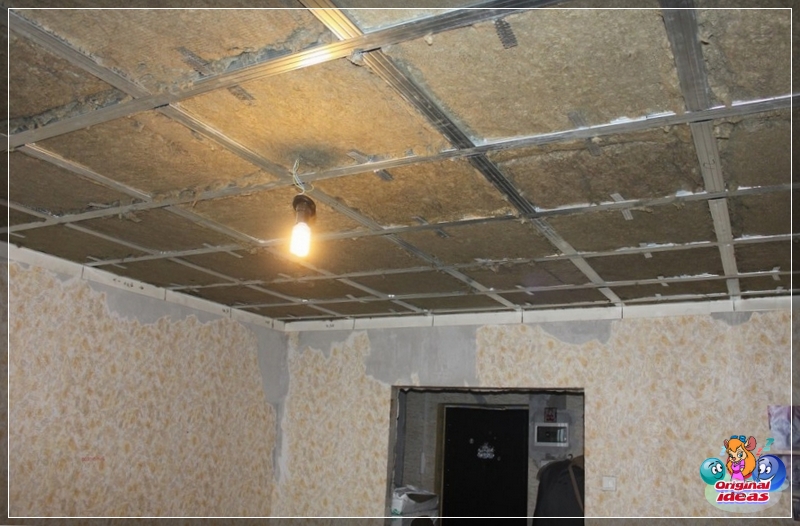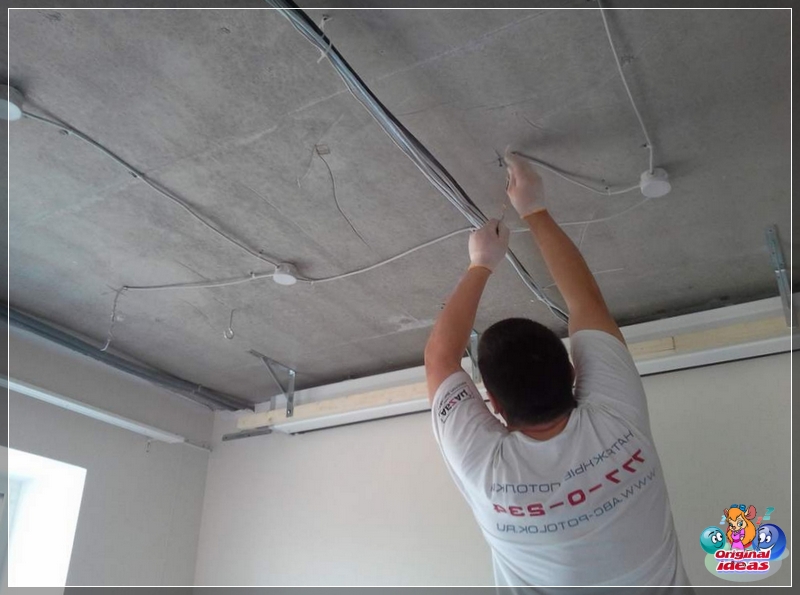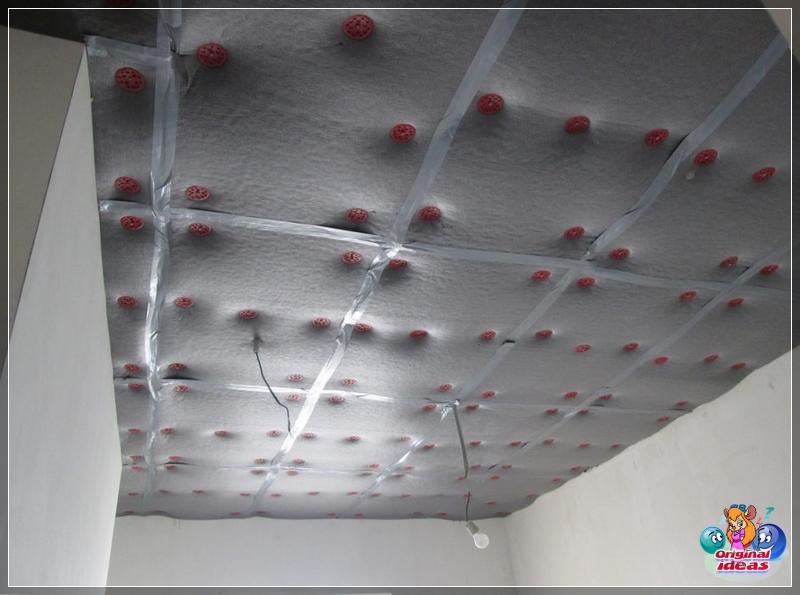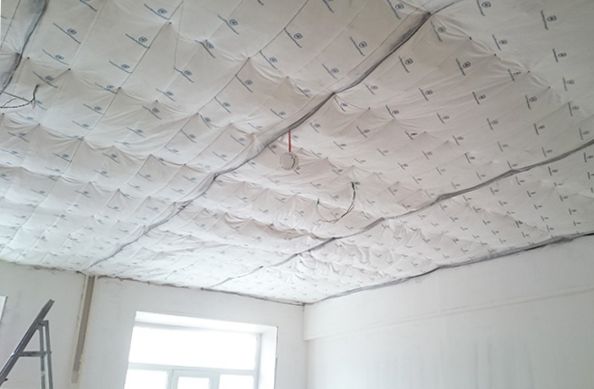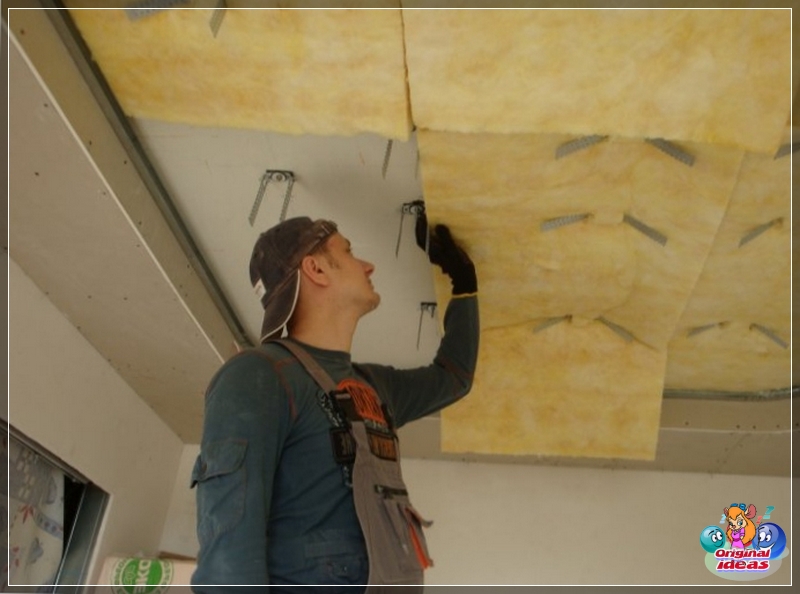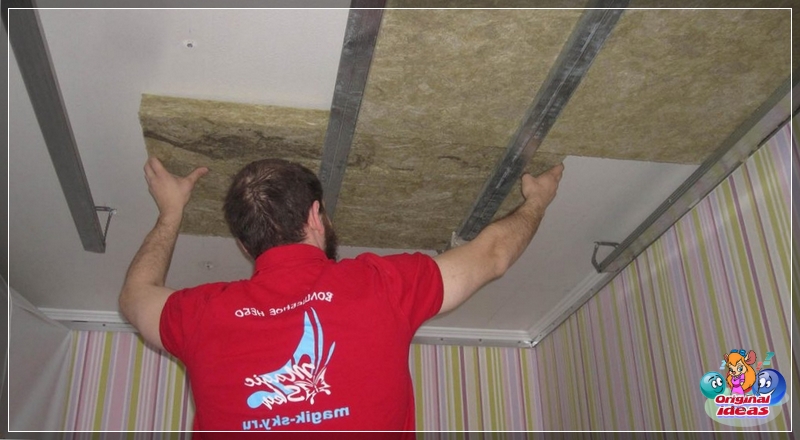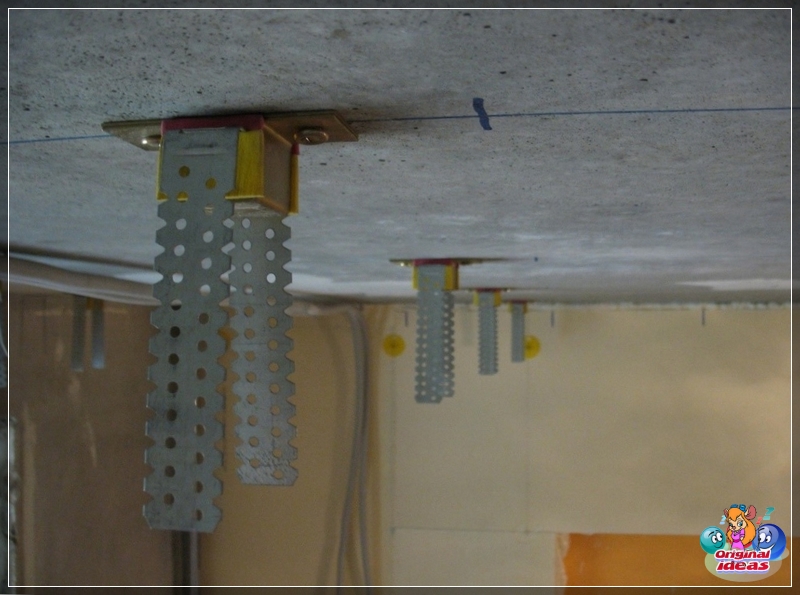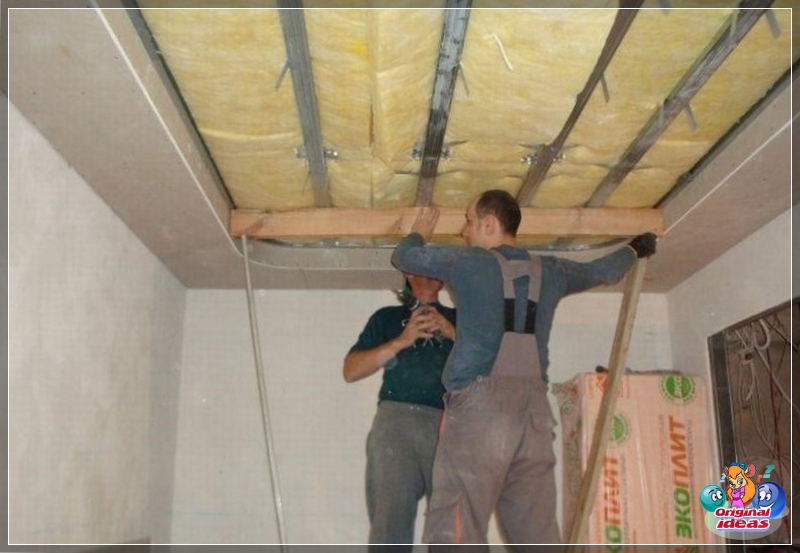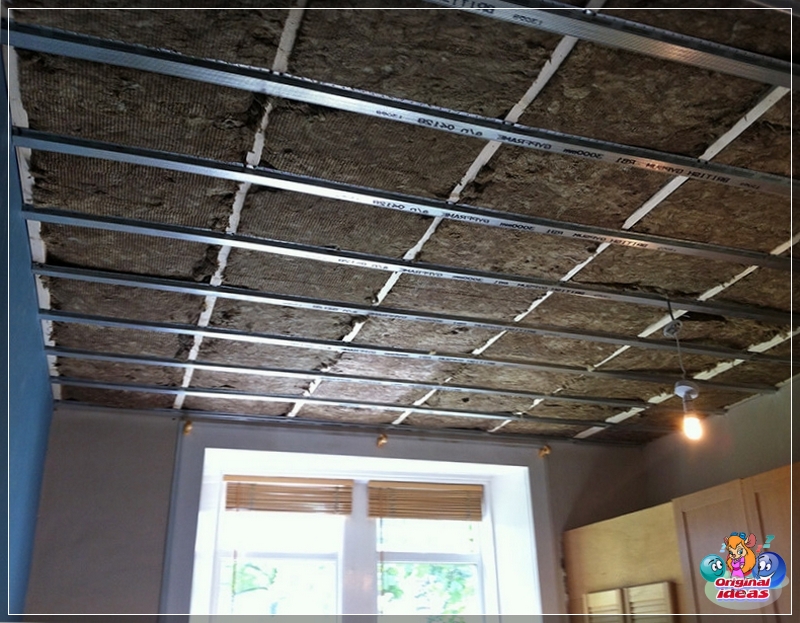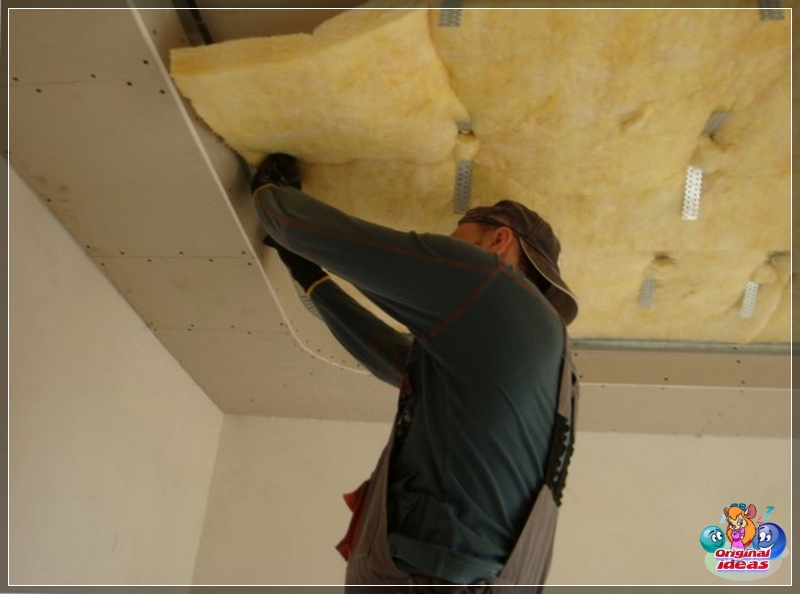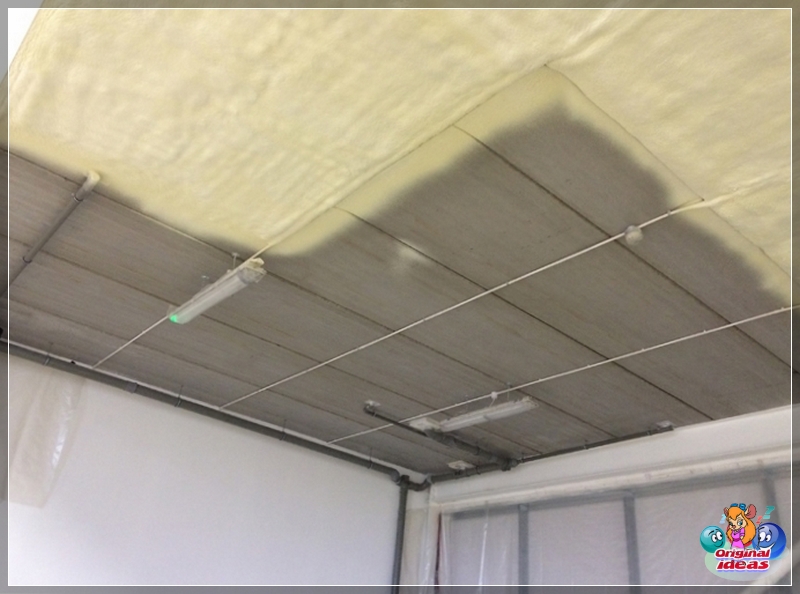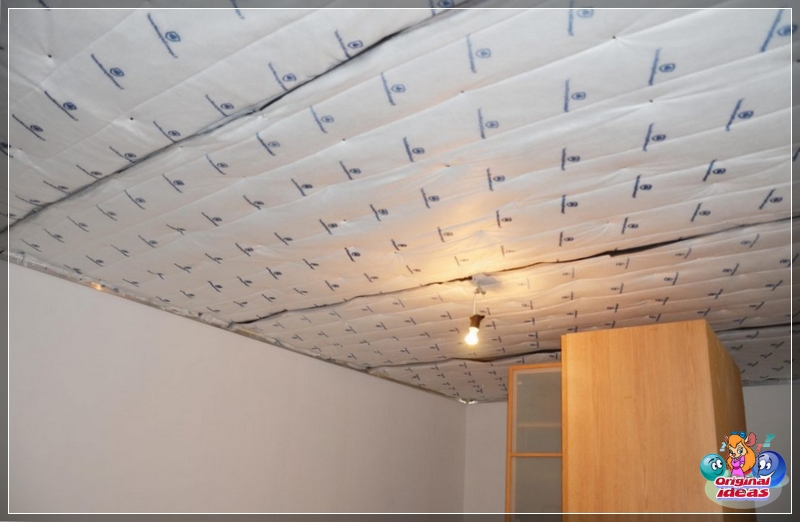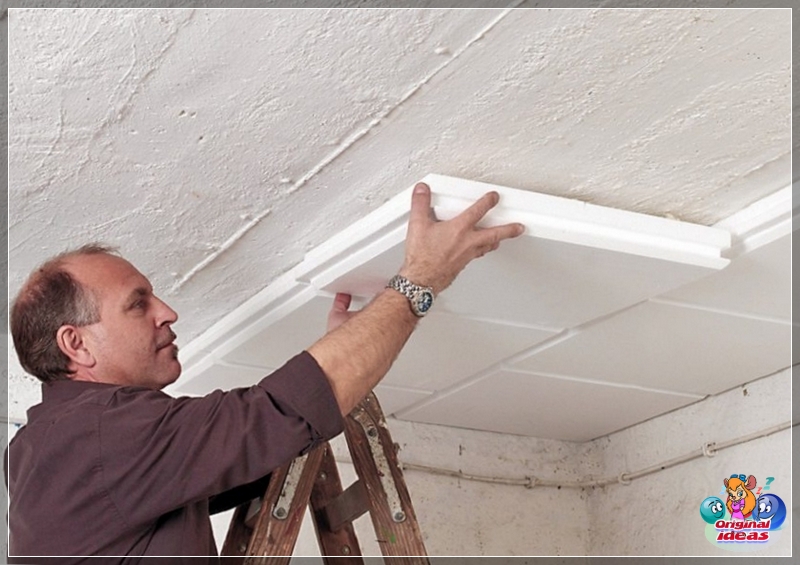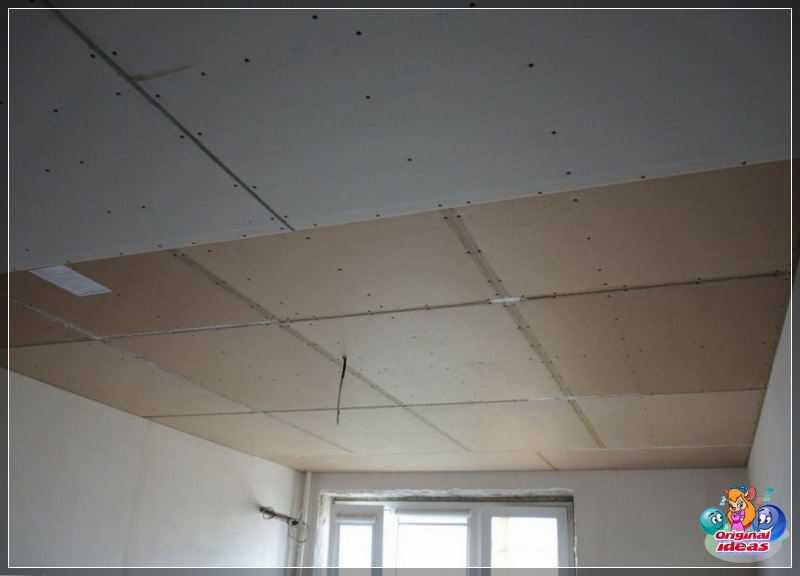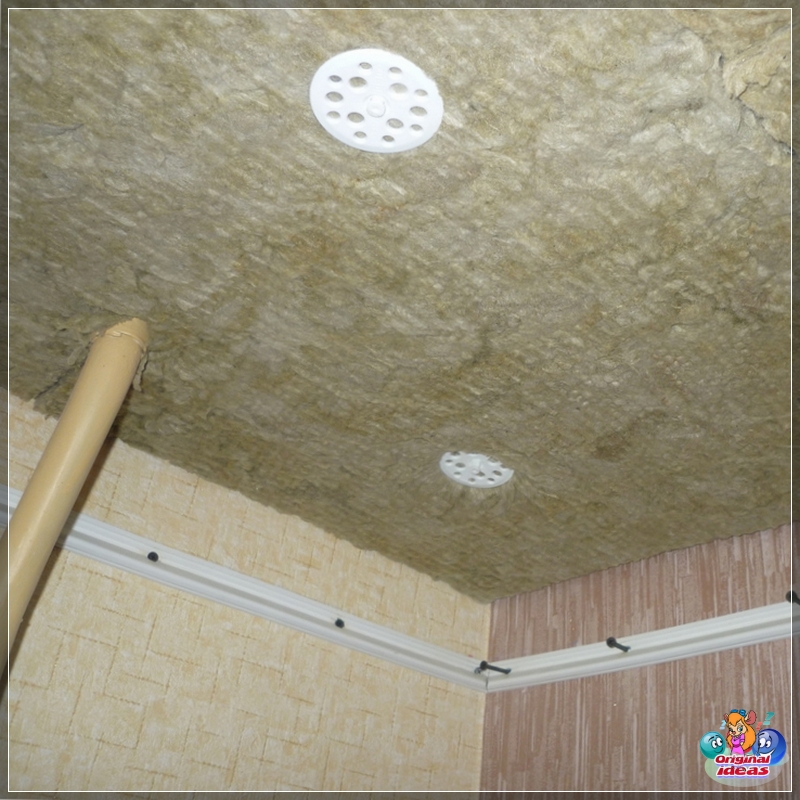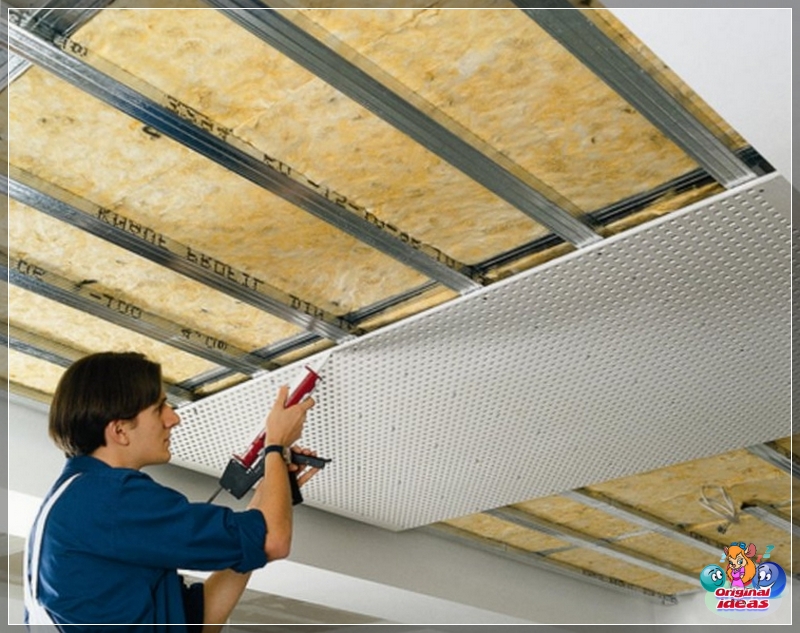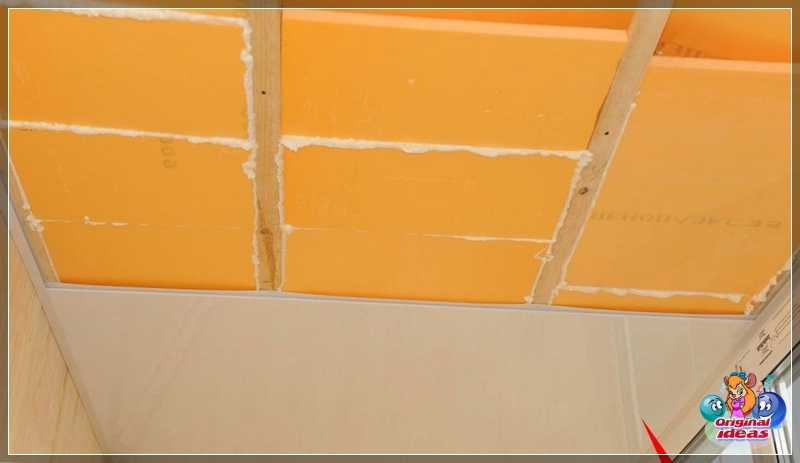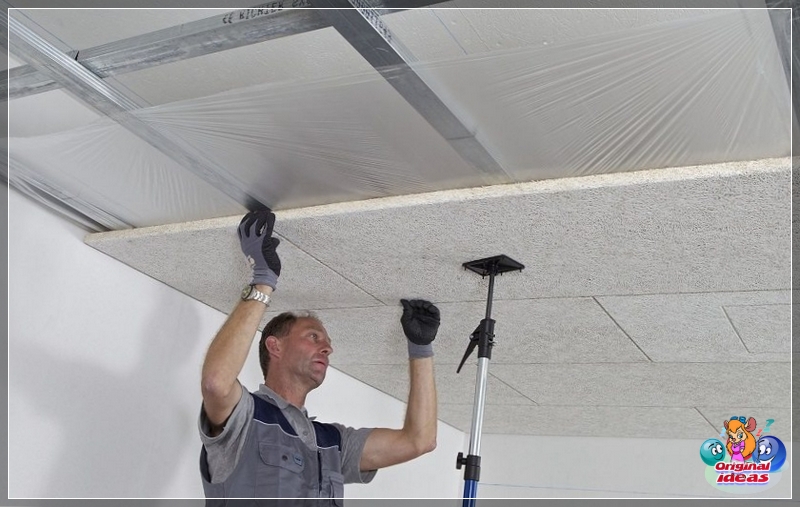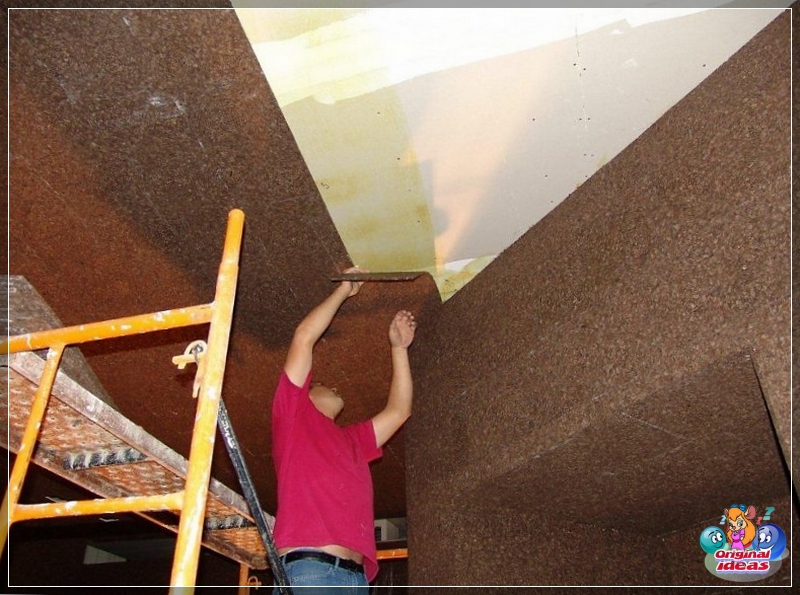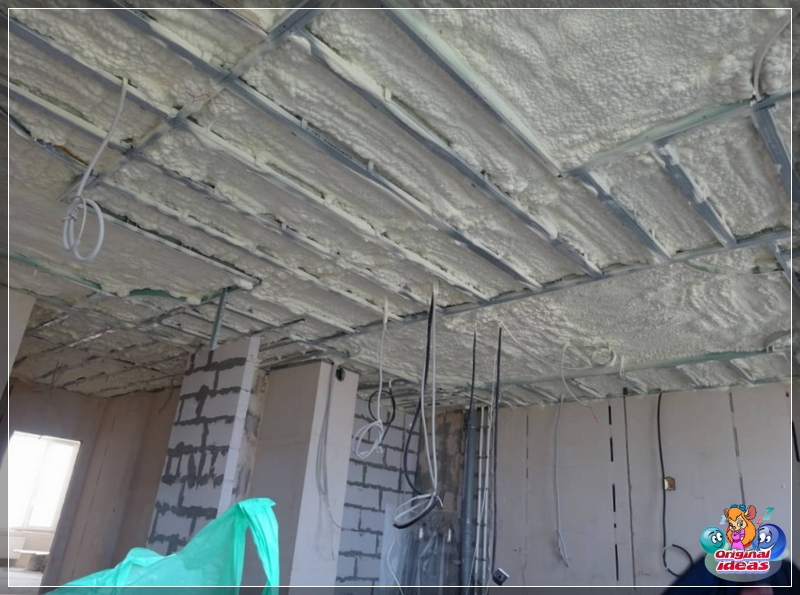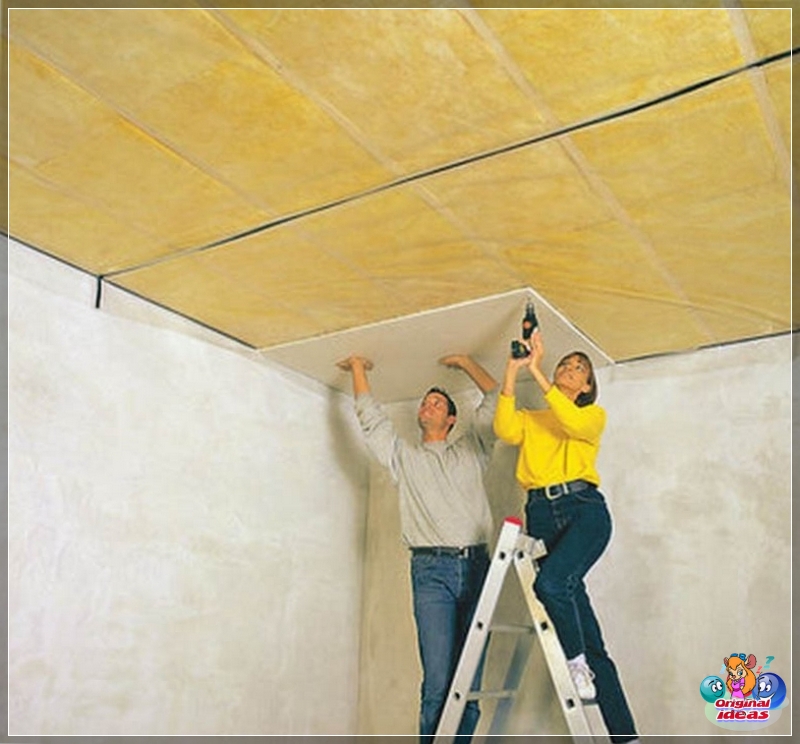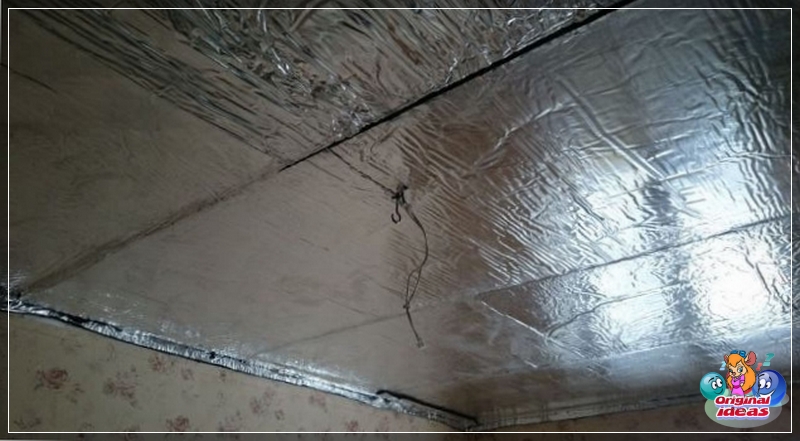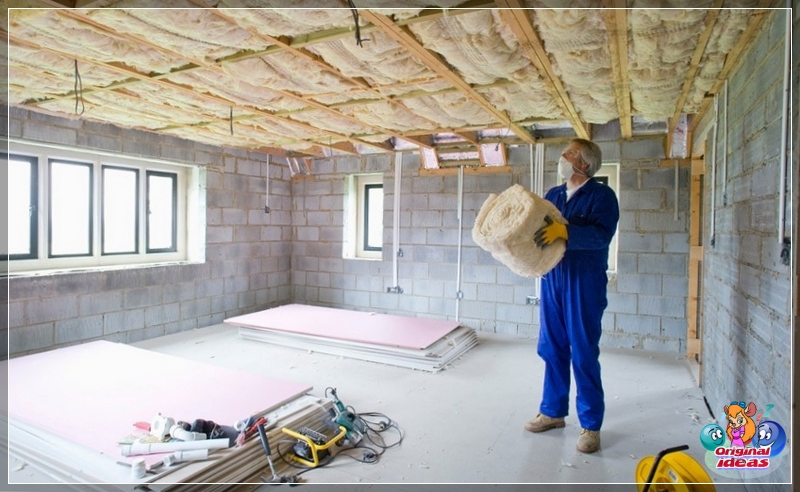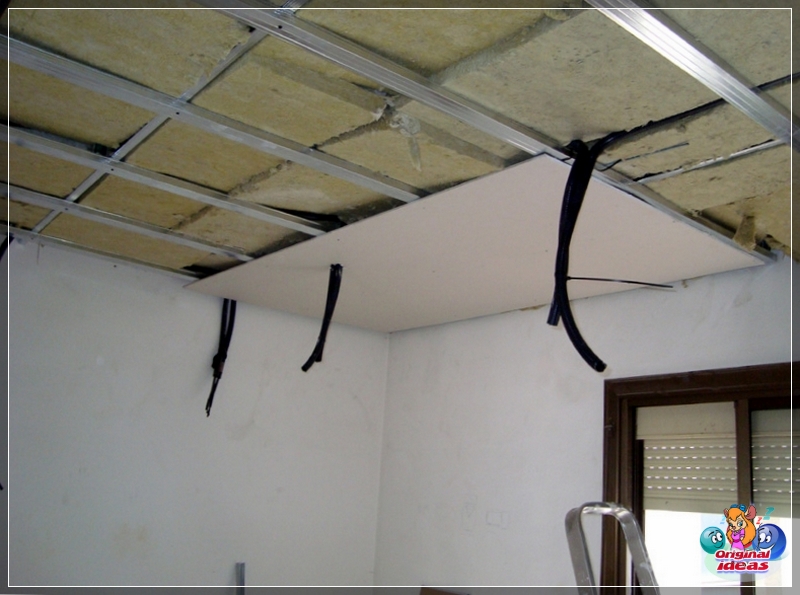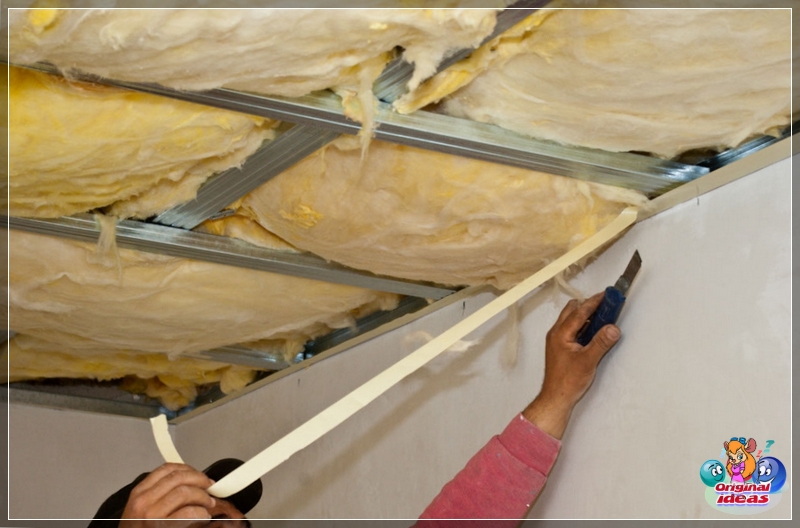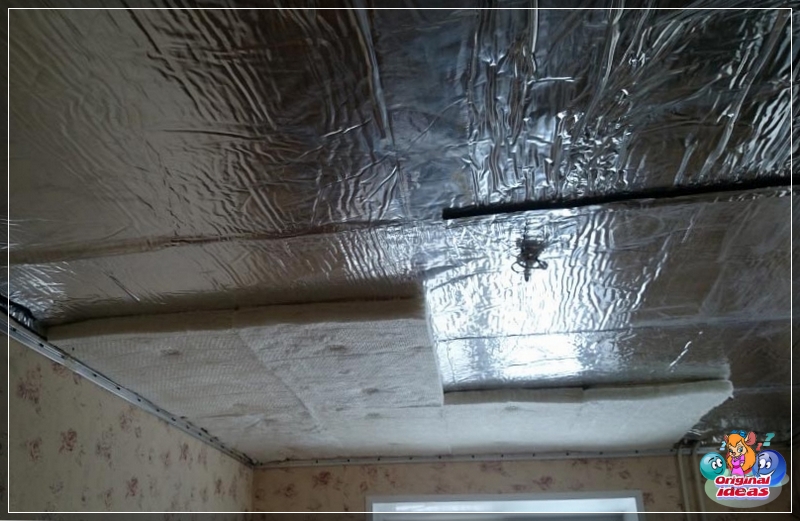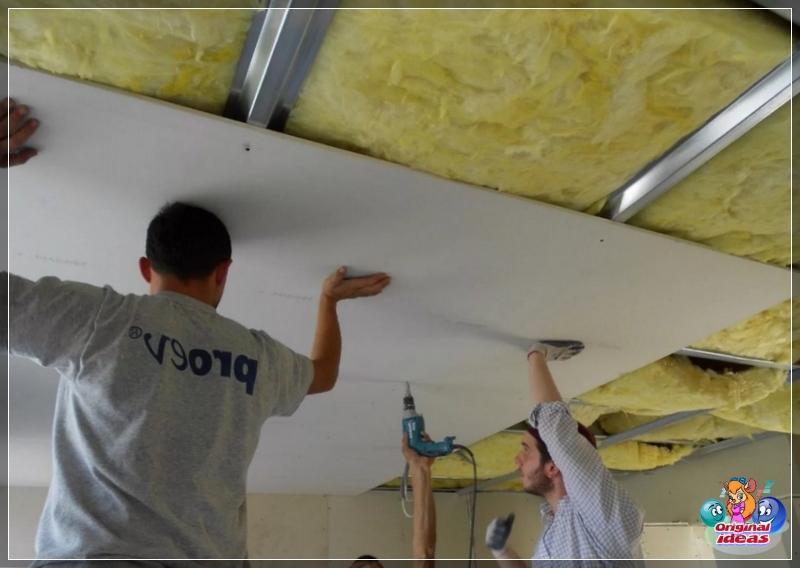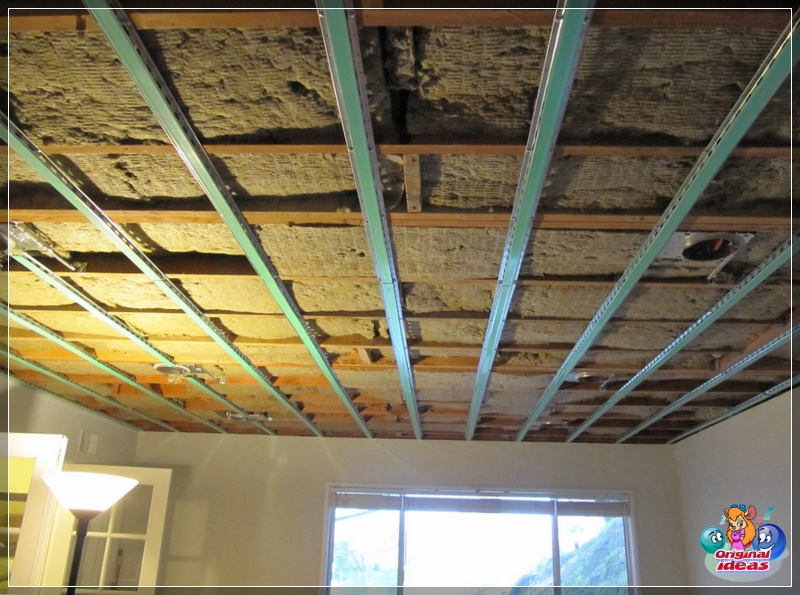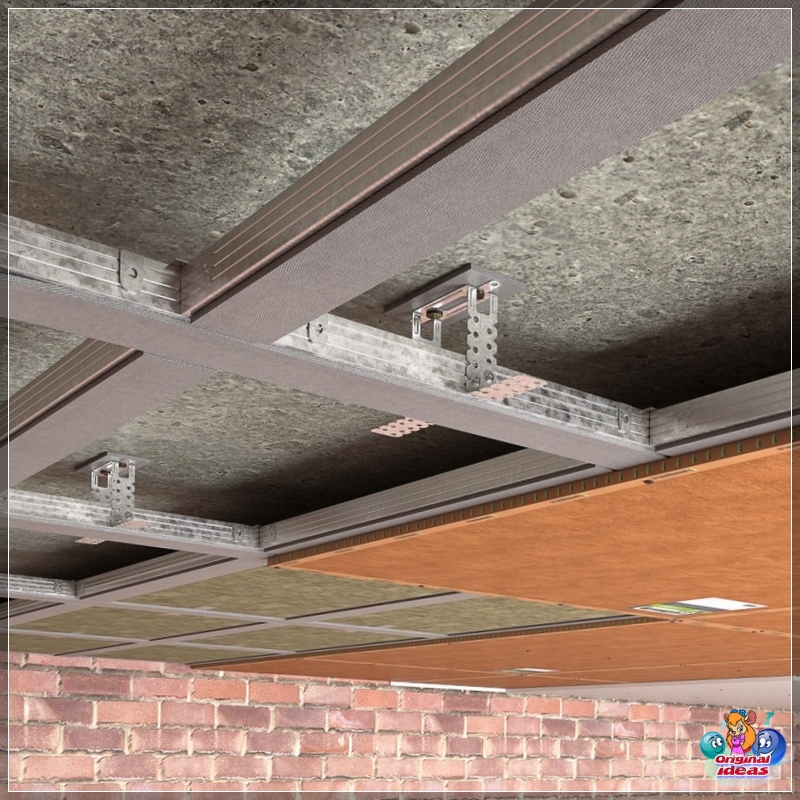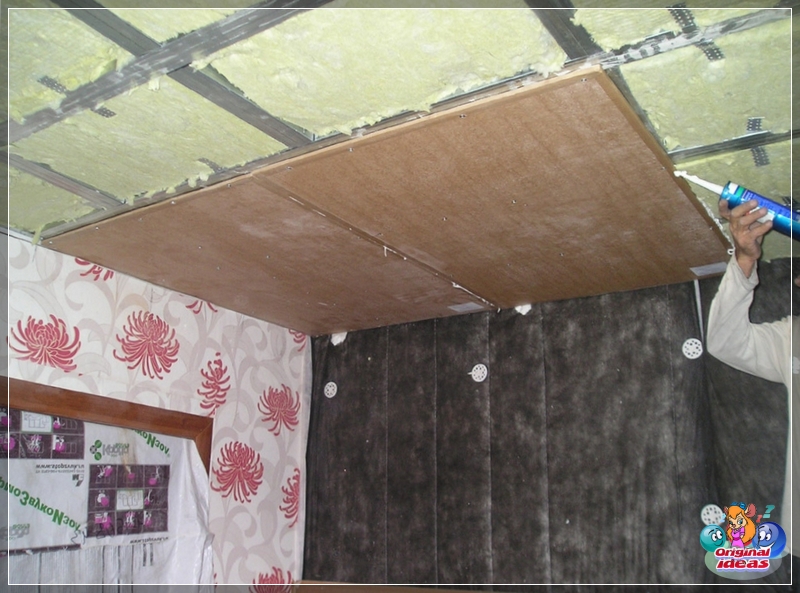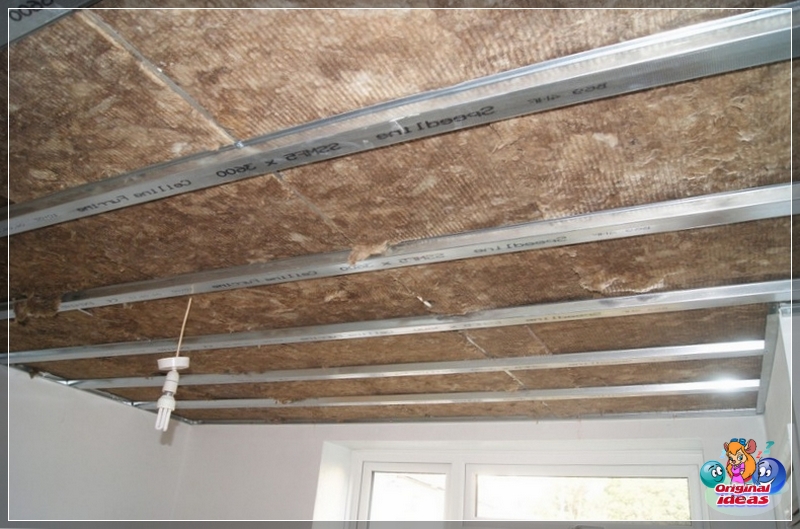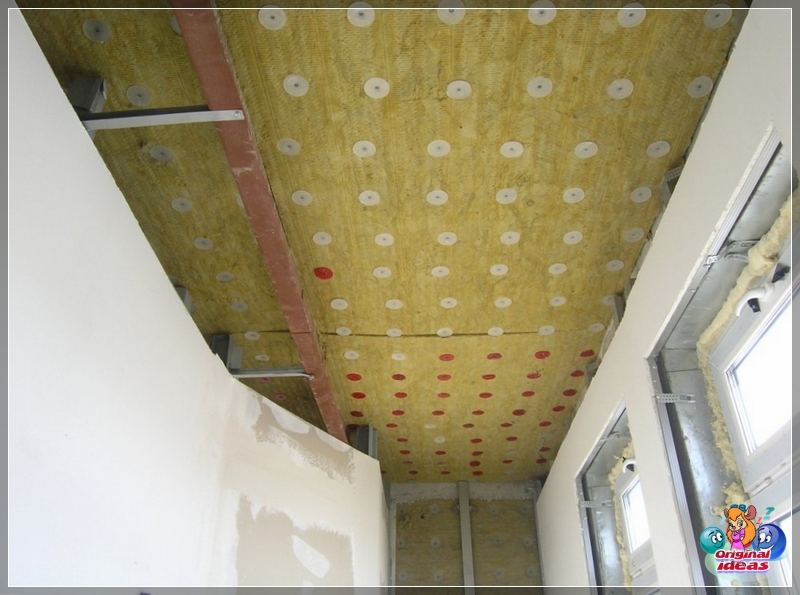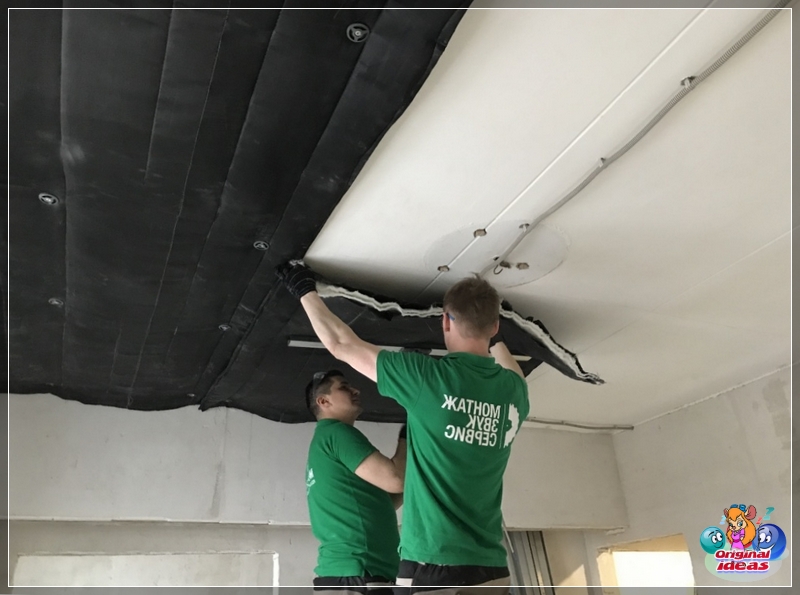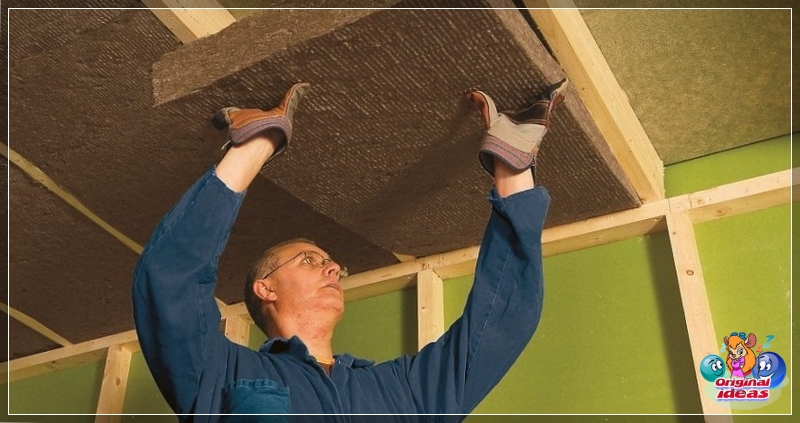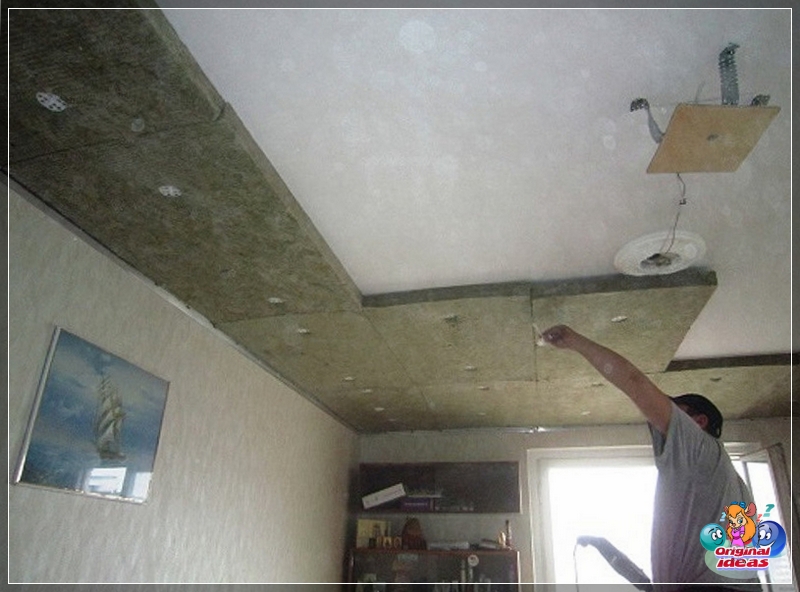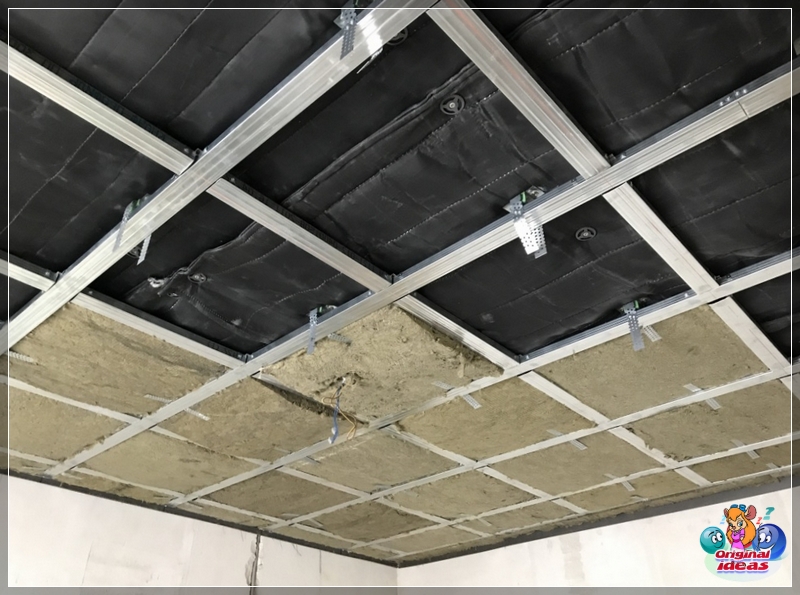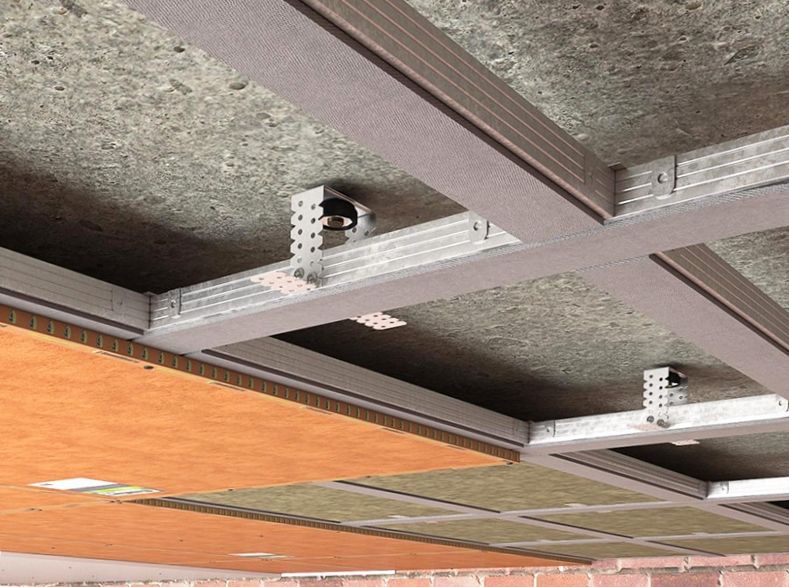Soundproofing the ceiling in the apartment allows you to get rid of the noise delivered by troubled neighbors living on the upper floors. In your own home, such protection will help ensure silence even with a large hail hitting the roof. In any case, for a comfortable stay and night tranquility, this element of the ceiling structure will not be superfluous. Knowing the basic principles of choosing materials and installation rules, you can do all the work yourself.
Specificity of the problem
Noise penetrating the ceiling of an apartment or one's own house makes up a significant part of the overall background noise in a residential area. Moreover, its level significantly affects the comfort of living and even human health. Conditions are considered comfortable when the noise level does not exceed 35-40 dB. Noise reaching 100 dB is considered critical.
Noises are of different nature and are divided into 2 categories - air and vibration. The first type is also called acoustic, and is caused by the propagation of sound waves through airspace (loud conversation, shouts, TV, music, etc.). d.). Vibration or impact noise is transmitted through solids and is associated with mechanical influences (shock, drilling, scratching, etc.). d.). Both types of noise are capable of spreading over an unprotected ceiling and entering the room, annoying residents.
The strength of noise penetration through the ceiling depends on what materials were used in its manufacture.
The fact is that different materials have different resistance to the passage of sound waves, i.e. e. soundproofing ability. This parameter is usually characterized by the sound insulation index: Rw (for acoustic noise) and Lw (for vibration noise). A standard reinforced concrete floor slab with a thickness of 22 cm has Rw in the range of 54-56 dB, and Lw - 72-74 dB, which does not allow sufficient sound insulation. There is a need to install additional protection from soundproof materials. In this case, 2 tasks are usually solved - the elimination of the penetration of noise from the outside and the prevention of the propagation of its own noise outside.
Sound insulation principles
The following main options for noise protection are distinguished:
Complete insulation. It covers all structural elements of the room - floor, walls, ceiling. Such protection is mounted during the construction process or at the stage of major repairs. Provides absorption of both types of noise.
Partial noise isolation. It covers only the ceiling and is mounted if the main noise penetrates through it. The need for work is identified after the completion of construction. When the ceiling as a whole is made of materials with a high sound insulation index, but there are areas - bridges for noise (for example, joints of slabs or ceiling with a wall), sound insulation can only be applied to such problem areas.
The choice of insulation option largely depends on the type of structure. So, panel houses require complete sound insulation, t. To. sound waves easily penetrate all structural elements. In a building with brick walls or in a house with wooden floors, the ceiling becomes the most vulnerable, and it is quite enough to make partial noise insulation.
Do-it-yourself soundproofing in an apartment can be mounted in different ways:
Frame technology. Protective functions are performed by plate or sheet materials, which are fixed on a frame made of a wooden bar or metal profile.
Frameless technology. Roll and sheet sound insulation is used for it. They are glued to the ceiling surface with special compounds or fixed with dowels. A special group is made up of materials applied to the surface in a liquid state and forming a solid layer after solidification.
Installation of noise insulation in suspended and suspended ceiling systems is simplified. In the first case, the material is placed in the cells of the already finished false ceiling frame. Noise insulation of the ceiling in the apartment under the stretch ceiling is attached to the ceiling and fills the space between the ceiling and the canvas.
Classification of noise insulation materials
According to the principle of operation, noise insulation materials can be divided into the following categories:
Sound absorbers. These are, as a rule, soft materials with a fibrous, layered or porous structure that can absorb sound vibrations well. Outstanding representatives - mineral wool, felt, synthetic winterizer, basalt fibers.
Sound insulators. Their insulating properties are provided by the reflection of sound waves. These are hard materials with a fairly dense structure (for example, brick).
Composites. In fact, these are combined systems consisting of layers of noise insulation materials of both types. High reliability is ensured by the fact that sound waves undergo multiple refractions, reflections and scattering in the thickness of the sandwich structure, and then are finally absorbed.
Modern ceilings are true loudspeakers using high performance sound insulators. They are able not only to provide protection against noise, but also to form visually attractive suspended and tension structures.
Main varieties
The modern building materials market offers a wide range of noise insulation materials. The following main groups of such products can be distinguished:
Soundproof boards. The main options are polyurethane foam, wood and cork boards. These are the most common materials with high efficiency and environmental friendliness.
Expanded polystyrene boards. There are 2 varieties - products made of extruded polymer (foam) and extruded polystyrene foam. The main disadvantage is flammability, and with the release of harmful substances in case of fire.
Sound absorbing mats. Basic materials - mineral and basalt wool, glass wool. Among the modern options, the Shumanet and Shumostop models stand out. Their characteristics are sharply reduced when moisture penetrates, which requires reliable waterproofing. An important disadvantage is the significant thickness of the insulation, which reduces the actual height of the ceiling.
Drywall. Noise insulation from gypsum board is usually made using frame technology, but, in principle, you can fix sheets without a frame, directly to the ceiling.
Soundproofing liquid consistency. It is most often done by spraying liquid polyurethane. Good protection is provided by special vinyl and soundproof, polymer paints.
Anti-vibration film or cloth. These materials are aimed at damping only impact noise, and therefore are more often used in conjunction with sound-absorbing plates. Can also be used as self-isolation. They are available in rolls and are easy to install. High efficiency is shown by felt, jute, coconut and linen. Among modern products, we can highlight the soundproofing of Texound.
Decorative panels. They can be made of plastic and wood. In addition to high sound insulation properties, they have an attractive appearance, which allows them to be used as a ceiling finish.
Suspended structures with acoustic effect. These modern systems are produced in the form of a stretch ceiling with a special fabric with perforation.
The choice of material depends on the noise level in the room, its nature, the size of the apartment and the height of the ceiling.
Most often, preference is given to soft roll materials. However, if it is necessary to ensure complete silence with a high noise level, it is better to use a combination of several different types of sound insulation.
Modern materials
Nowadays, you can pick up modern materials for an apartment for every taste. They are easy to do-it-yourself installation, they are distinguished by high noise insulation capabilities. The following products can be distinguished:
Isotex. The material is produced in the form of soundproof plates with a thickness of 10-30 mm with a locking profile at the ends. The top of the slabs are covered with a layer of foil. Sound absorption coefficient reaches 24 dB at a thickness of 10 mm. Isotex can be mounted framelessly using liquid nails.
Isoplaat. The basis of the material is natural coniferous wood. Such panels are 25 mm thick. They are mounted on a frame. Sound insulation coefficient - 24-27 dB.
Wallpaper membrane "Zvukanet Acoustic". These are thin plates measuring 50x0.5 cm, covered with a paper layer. You can stick ordinary wallpaper on top of them. They are able to eliminate noise up to 25 dB.
GreenGlue. Liquid sound absorbing material that can deal with both types of noise. It is usually placed between sheet finishes.
TopsilentBitex. This is a soundproof membrane with a thickness of no more than 4 mm. Reduces noise level up to 22-23 dB. Plates size 60x115 and 60x230 cm.
Tecsound. Produced in the form of membranes, plates with a thickness of 3.8 mm and a size of 1.2x5 m. Differs in increased specific gravity. Sound insulation coefficient - not less than 28 dB. Most effective for high frequency sounds.
"Ecotishina will sound". Insulation is made of polyester fibers in strips up to 4 cm thick, 60 cm wide and up to 10 m long.
"Comfort". These are panels 60x250 and 120x300 cm in size and 10 mm to 10 cm thick. Sound insulation coefficient reaches 47 dB.
"Shumanet BM". Such panels are made on the basis of basalt fiber. Sound absorption reaches 90% with a thickness of 5 cm. Panel dimensions - 60x100 cm.
Acoustic-Stop. They look like pyramids, which are evenly distributed on the ceiling surface. As a result, sound absorption is in the range of 80-99%. Standard element thicknesses - 3, 5 and 7 cm.
Today, stretch ceilings are in vogue, which give a living space a special appeal. For such structures, modern highly efficient noise absorbers have been developed. Of particular note is the white polyester boards of the Max Forte EcoAcoustic brand, 5 cm thick. Another interesting option for SoundPRO. It is a new generation roll type material. Thickness - only 12 mm. Fastening of both materials is carried out directly to the ceiling slab using dowels, before tensioning the ceiling sheet.
Reviews
Numerous positive reviews prove the high efficiency of ceiling sound insulation in apartments and private houses:
Nikolay (g. Mytishchi). “Tired of the neighbors upstairs who make noise every day, and even after 23 hours. I opted for polyurethane foam tiles. Fixed them to the ceiling with liquid nails. After installation, all problems with insomnia disappeared ".
Sergey (g. Omsk). “I lost my peace of mind from constant noise, but ecological cleanliness is psychologically important for me. Recommended mineral wool mats. Installed and so far happy with the solution. True, I'm very afraid if the neighbors flood ".
Victor (g. Saratov). “I decided to make repairs, and at the same time take care of the soundproofing of the ceiling. I am a modern person, and therefore I purchased the innovative TopsilentBitex material. It should be noted that the slabs are easily attached to the ceiling, and the effect is colossal. The apartment now has peace and quiet ".
Quite often, soundproofing the ceiling becomes not a luxury, but a necessity. You can make it at any time and in different ways. You can use well-known traditional materials or modern innovative sound insulation. Self-assembly will help reduce the cost of this event.
